Dubai Metro Operating Hours on Saturdays Explained
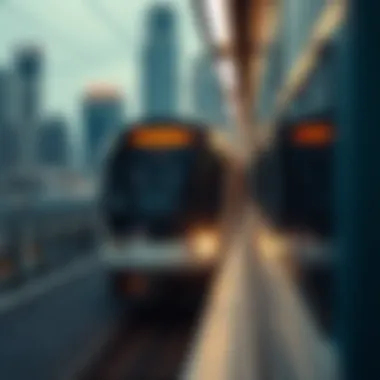

Intro
Dubai's rapid urbanization has transformed it into a bustling metropolis, where mobility plays a crucial role in its day-to-day functioning. As the city continues evolving, the Dubai Metro stands as a testament to modern public transport solutions. Particularly on Saturdays, the operational hours of the Metro offer a glimpse into how the system accommodates the unique demands of both locals and tourists.
Understanding the timing of the Dubai Metro on these weekends is pivotal for anyone wishing to navigate the city freely. With countless attractions scattered throughout the metropolitan area, knowing when to hop on the train can make all the difference between a day jam-packed with fun, or one spent waiting around. This underscores the necessity of getting acquainted with Dubai Metro's Saturday schedule, its efficiency, and how it plays into the broader puzzle of urban transit.
In this article, we will break down the nuances of Dubai Metro's Saturday timings. We will discuss key considerations for daily commuters and weekend travelers, delve into service frequency, and shed light on peak hours.
By the end, you’ll have a holistic view of how to make the most of your journey across the city, whether you’re an investor eyeing potential real estate or just a curious visitor wanting to explore Dubai's vibrant offerings.
Market Insights
Understanding the Urban Transport Landscape
The public transport system in Dubai, particularly the Metro, has seen a tremendous surge in ridership since its inception. On Saturdays, the city transforms into a hive of activity, and the Metro responds accordingly. For those commuting to work or visiting popular attractions, being aware of how the Metro's hours align with peak travel can be your golden ticket.
- Peak Periods: Typically, Saturday rush hours are smaller than typical weekdays, yet tourists flock to popular spots, impacting service frequencies.
- Service Efficiency: The Metro operates every 10 to 12 minutes during peak hours and slightly less frequently during off-peak times.
The integration of the Metro with other modes of transport like buses and trams is also a point of interest. These connections can be utilized for a seamless travel experience across different areas.
Key Considerations for Commuters and Tourists
Understanding specific timings can help plan your journey better.
- Opening Hours: The Metro starts running from 6:00 AM on Saturdays, catering to early risers.
- Closing Time: On this day, services wind down around midnight.
In addition to these timings, it's critical to consider the layout of the lines and the strategic stops that connect significant attractions in the city. For instance, the Burj Khalifa and Dubai Mall are easily reachable from the Metro stations, thereby serving as prime destinations for weekend escapades.
“Dubai Metro is more than just a means of transport; it’s a gateway to the city’s heart.”
Recommendations for Effective Travel
To ensure a smooth ride, think about the following tips:
- Check Live Updates: Utilize apps that provide real-time information on Metro services. These can thave a way of cutting down waiting times substantially.
- Avoid Peak Hours: If possible, travel early or later in the day to side step crowds.
- Purchase an NOL Card: This card is not only convenient but also offers discounts on rides.
All in all, grasping the operational hours and planning accordingly can enhance a visitor's or commuter's experience through this lively city. The Dubai Metro is designed to make traveling easier, ensuring that getting from A to B is not just simple but also a part of the experience itself.
For more information about the Dubai Metro, check out Dubai Metro Official Website.
Overview of Dubai Metro
The Dubai Metro is more than just a mode of transport; it stands as a symbol of the city's commitment to modernity and innovation. Established under the Roads and Transport Authority, the Dubai Metro has drastically transformed the landscape of urban transit in the United Arab Emirates. As urban development accelerates at an impressive pace, understanding the nuances of the metro system, especially its operational timings on Saturdays, becomes key for both locals and visitors alike.
An essential aspect to consider is the convenience the metro offers. For everyday commuters, this service provides a reliable and efficient means to traverse the bustling city. The operational hours on Saturdays are particularly crucial, as this day serves as a bridge between the busy workweek and the leisure-driven Sundays in Dubai.
Development and History
Initiated in 2006, the launch of the Dubai Metro was a groundbreaking endeavor aimed at addressing the growing traffic congestion in the city. The first line opened in 2009, marking a pivotal moment in public transportation history in the UAE. Notably, the metro has expanded significantly over the years, with new lines and stations added to meet the rising demand. This expansion reflects Dubai’s broader vision of sustainable development and urban planning aimed at shaping a city that can efficiently manage its rapid growth.
The design of the metro is just as remarkable as its history. With stations that feature modern aesthetics and amenities, it's designed to provide a comfortable experience for passengers. From the iconic elevated tracks seen throughout the city to the meticulous planning of the underground routes, the Dubai Metro exemplifies cutting-edge engineering tailored for a bustling metropolis.
Significance in Urban Transportation
The significance of the Dubai Metro in urban transportation cannot be overstated. It effectively alleviates the burden on road networks, offering an alternative that is faster and cleaner. The metro system eliminates the need for private vehicle usage among many residents, which in turn lowers carbon footprints. This environmentally friendly form of transport is crucial for a city eager to promote eco-sustainability.
Furthermore, it connects various key areas of Dubai, enhancing accessibility to major attractions, business districts, and residential neighborhoods. The efficiency of the metro contributes not only to commuters' convenience but also to boosting tourism—a vital sector for Dubai’s economy.
In summary, the overview of the Dubai Metro sets the stage for a deeper following exploration into its operational hours and the impact on both urban life and tourism. As many people utilize this mode of transit, especially on weekends, understanding the timings becomes paramount for navigating the city smoothly.
General Operational Hours of Dubai Metro
Understanding the general operational hours of the Dubai Metro is vital for anyone navigating the sprawling cityscape. This framework directly affects how efficiently residents and tourists can traverse various destinations, facilitating a seamless travel experience. The metro system operates with structured hours that vary significantly between weekdays and weekends, demanding awareness and planning from users. Such knowledge is not merely a convenience; it's a crucial aspect of urban mobility that can save time, enhance accessibility, and improve the overall transit experience.
Weekday vs. Weekend Timings
Metro timings show a distinct difference between weekdays and weekends. During the weekdays, operational hours usually span from 6 AM to midnight, with trains running frequently to cater to the bustling work crowd. Conversely, Saturdays, falling under the weekend umbrella, witness a slight shift. Typically, the doors swing open at 8 AM and remain operational until midnight. This variation can be attributed to the change in commuter patterns and the diversity of activities people engage in on weekends.
On Saturdays, the metro's later morning start allows for some necessary downtime for maintenance and ensures the system is in peak shape for the influx of weekend travelers. It's also worth noting that the frequency of trains on Saturdays may not match the rigor of a weekday schedule, so commuters should keep this in mind.
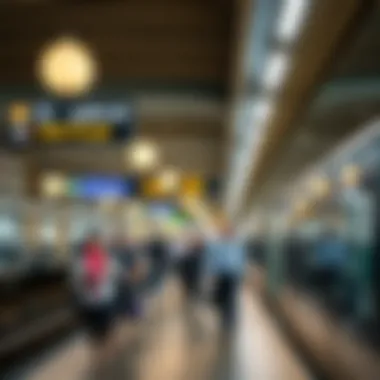
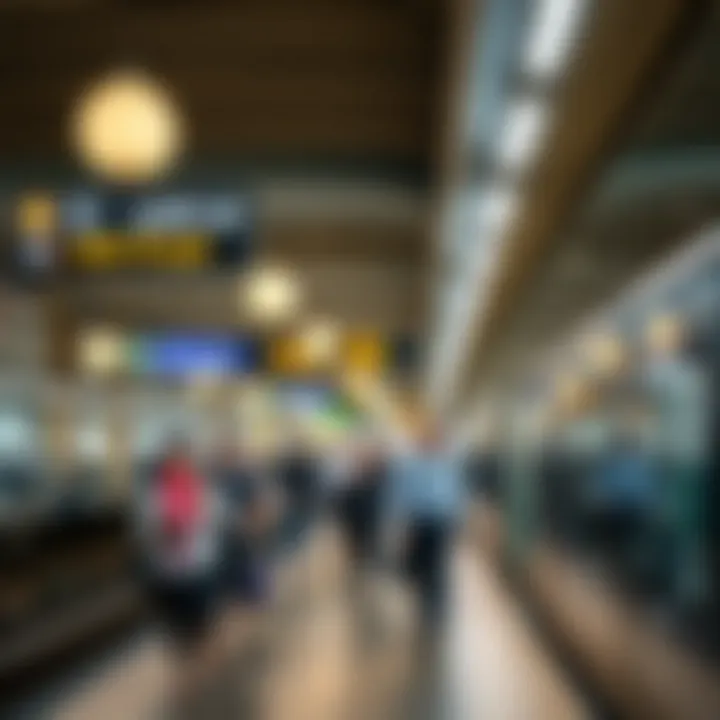
- Weekday Hours: 6 AM - Midnight
- Saturday Hours: 8 AM - Midnight
By being aware of these differences, commuters can optimize their travel plans. This understanding helps avoid potential rushes and crowded trains, especially if you’re planning to visit popular spots later in the day.
Impact on Commuters
The timing of the Dubai Metro on Saturdays plays a significant role in commuters' daily lives. Individuals traveling for leisure, shopping trips, or social events need to adapt to these hours. For example, those wishing to enjoy a leisurely morning brunch in popular districts like Jumeirah or Downtown may find that the delayed start can be a hassle. If you're aiming for a 10 AM reservation at a quintessential café, understanding that the metro won't be operational until 8 AM changes how you plan the morning.
Moreover, for expatriates or newcomers adjusting to life in Dubai, familiarizing themselves with these weekend timings can significantly influence their leisure plans. This adjustment may mean opting for earlier wake-up calls or seeking alternative transport modes, like taxis or ride-sharing apps, before the metro begins service.
In the realm of public transportation, using the metro system effectively also reflects on the sustainability aspect. Cohesive scheduling promotes a smoother, more efficient transit environment while reducing individual vehicle usage, which is a comprehensive goal in Dubai's transport planning.
"Understanding the operational hours not only aids personal travel planning but reinforces the communal effort towards an efficient urban transportation system."
A balanced approach to planning can elevate one’s experience of the city, ensuring that the metro system remains a preferred choice for getting around. In summary, being cognizant of these operational hours enlightens commuters and enables them to navigate their journeys with fewer hiccups.
Specific Timing for Saturdays
The timings of the Dubai Metro on Saturdays hold a significant place in the urban transit landscape of this bustling city. With the weekend marking a shift in both work and leisure activities, understanding these specific hours is essential for both residents and tourists. This section will delve into the details of Saturday operational times, emphasizing the overall benefits of knowing when to navigate the metro system.
Morning Operational Hours
On Saturdays, the morning operational hours for the Dubai Metro kick off at 10:00 AM. This late start compared to weekdays is tailored to accommodate the shifts in daily schedules, allowing many locals and visitors to enjoy a leisurely start to their weekend. The decision to launch services later in the day is influenced by the cultural norm of having Friday as a rest day, resulting in various individuals beginning their Saturday only after some time has passed.
During these morning hours, trains run at a frequency of around every ten minutes, providing ample opportunity for commuters to make use of the service without long waits. This service design allows those heading to late brunches, shopping, or even leisure activities at places like Dubai Mall or Jumeirah Beach to have a stress-free journey. Here are some key aspects of the morning service:
- Start Time: 10:00 AM
- Frequency: Every 10 minutes
- Popular Destinations: Dubai Mall, Burj Khalifa, and various public parks
These hours cater effectively to the community's needs, making Saturday mornings in Dubai not just about transportation, but also about enjoying leisurely pursuits without the pressure of tight schedules.
Afternoon and Evening Service
As the day progresses, the afternoon and evening services on Saturdays become increasingly active. From 1:00 PM onwards until midnight, the Dubai Metro extends its accessibility to a wider array of destinations and activities. This period marks a clear transition where social engagement typically peaks, with restaurants and entertainment venues buzzing with life.
During this window, the metro operates with trains running every five minutes, significantly increasing the system’s capacity to handle the heightened demand. The typical customers in this timeframe include tourists exploring the city, families heading out for dinners, and individuals making their way to events or night markets.
Key features of the afternoon and evening service are as follows:
- Start Time: 1:00 PM
- Frequency: Every 5 minutes
- End Time: Midnight
- Common Travel Patterns: Dinner outings, leisure activities, and nightlife engagements
The following list highlights notable stops popular during this service time:
- Dubai Marina for its vibrant dining scene
- The Global Village, particularly during seasonal festivals
- The Outlet Village for shopping discounts
With trains operating late into the night, the metro not only serves as a reliable transport option but also promotes a relaxed environment where individuals can enjoy the city's vibrant nightlife without the hassle of driving or parking.
Knowing the Saturday metro timings isn't just about catching a train; it’s about maximizing time spent on enjoyment, culture, and exploration within Dubai.
An understanding of the specific timing for Saturdays brings clarity to various transportation patterns and ensures smooth commutes during peak leisure hours, enhancing the overall experience in this energetic metropolis.
Metro Frequency on Saturdays
The frequency of the Dubai Metro on Saturdays plays a critical role in shaping the commuting experience for both residents and visitors. With a bustling metropolis like Dubai, knowing how often trains run can make or break travel plans. The operational frequency directly influences how swiftly one can navigate across the city, making this aspect vital in the grand scheme of urban transport.
When discussing the importance of metro frequency, several factors come into play:
- Time management: Having an understanding of how frequently trains arrive helps commuters plan their days better, avoiding unnecessary delays.
- Access to services: For tourists looking to hop between attractions, knowing the train schedule can determine how much they can accomplish in a day.
- Capacity utilization: Frequent services can also mitigate crowding to some extent, allowing for a more comfortable journey.
Train Intervals
When it comes to the train intervals on Saturdays, there’s a unique rhythm to the metro’s schedule. During this day, trains generally run every 7 to 10 minutes during peak hours. This interval allows commuters to plan ahead without the stress of long waits.
However, as the afternoon wears on, this frequency may slightly adjust depending on rider traffic patterns. Here's a brief breakdown:
- Morning peak (7 AM - 10 AM): Trains operate at shorter intervals, about every 7 minutes.
- Midday (10 AM - 3 PM): Expect a moderate interval of about 10 minutes, accommodating varying ridership numbers.
- Evening peak (3 PM - 7 PM): Similar to the morning rush, frequency tightens back to around 7 minutes as commuters head home.
Such details are essential for a seamless journey, providing clarity to those planning their metro rides in advance.
Factors Affecting Frequency
Understanding the factors that affect train frequency is equally significant. While the scheduled intervals aim to address typical weekly patterns, several variables can come into play:
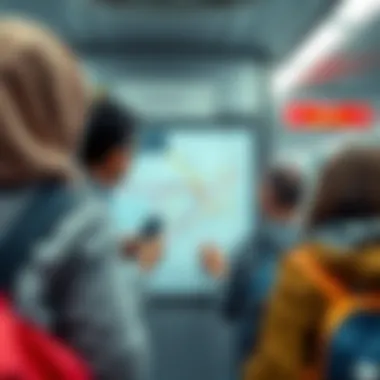

- Demand fluctuations: Events, holidays, or even the weather can cause unexpected surges in passenger numbers, prompting adjustments in train frequency.
- Operational capacity: The number of available trains and crew, along with any maintenance work being done, can affect how often the metro runs.
- Long-term planning: As the city expands and new projects unfold, frequency patterns may evolve to adapt to changing population dynamics and urban development.
An Analysis of Peak and Off-Peak Times
Understanding the ebb and flow of commuter movement is crucial for navigating the Dubai Metro on Saturdays. The concept of peak and off-peak times serves as a compass for both residents and visitors, equipping them with knowledge that can make their journey smoother and more efficient.
Peak times are defined by the higher volume of commuters typically heading to work or engaging in weekend activities. On Saturdays, this is particularly significant as many people in Dubai take advantage of the weekend to shop, socialize, or attend events. Knowing these busy times not only helps avoid overcrowding but also aids in optimizing travel schedules, ensuring one doesn't waste precious time waiting for a train.
Conversely, off-peak times generally see fewer passengers. During these times, the Metro trains run with less congestion, allowing for a more relaxed travel experience. Commuters looking for a quieter commute can strategize their travel around these hours. In essence, understanding when these peaks occur can positively influence travel efficiency and overall satisfaction.
Understanding Commuter Patterns
Delving into the patterns that define commuter behavior on Saturdays reveals a fascinating tapestry of movement across Dubai. Morning peak often begins around 9 AM as locals head out to brunch spots or markets. By contrast, the mid-afternoon hours, roughly between 2 PM and 4 PM, experience a lull, providing a respite from throngs of passengers. There’s a noticeable return of travelers during the evening, particularly when the sun sets just prior to 7 PM, as people flock to social hubs or leisure activities.
Additionally, identifying popular destinations can further enhance understanding of commuter patterns. Areas like Dubai Mall or The Beach at JBR consistently draw crowds, meaning trains serving these areas will likely be busier during non-peak hours. Understanding these nuances allows commuters to make informed decisions, further optimizing their journeys.
Recommendations for Efficient Travel
To navigate the Dubai Metro seamlessly on Saturdays, a few practical tips can help folks maximize their travel experience:
- Plan Ahead: Checking the rail timetable in advance can save you from unnecessary waiting, especially during peak hours.
- Travel Light: If possible, avoid large bags or cumbersome items, as this will make entering and exiting stations easier.
- Use Outside Doors: When waiting on the platform, stand near the doors in line with the train's layout. This will prevent any last-minute dash across the platform when the train arrives.
- Stay Informed: Follow Metro updates or any service changes through official channels such as RTA's website or even social media.
By minding these suggestions, commuters can maneuver through the Dubai Metro like pros, ensuring their Saturday experiences are both enjoyable and hassle-free.
"A little preparation goes a long way in avoiding the weekend rush and getting the most out of your Dubai Metro journey."
Integration with Other Modes of Transport
The Dubai Metro plays a crucial role in the urban transport landscape, but it doesn’t operate in isolation. Its integration with other modes of transport is essential for creating a seamless travel experience for both residents and tourists. Understanding these connections can significantly enhance the efficiency of one's journey, making it easier to navigate the city.
A multimodal transport system leverages the strengths of various transport methods. Thus, passengers using the Dubai Metro can easily combine it with buses and taxis, reducing overall travel time and making the logistics of urban commutes manageable. This integration is particularly advantageous on Saturdays, when tourism peaks and the metropolitan area is bustling.
Bus Connections
The bus network in Dubai is extensive and well-coordinated with the metro system. Most metro stations, especially major hubs, serve as transfer points to various bus routes. The roads are bustling with double-decker buses running frequently throughout the day, catering to commuters from all walks of life.
When planning travel, one must consider the following benefits of bus connections:
- Affordability: Buses in Dubai offer a cost-effective solution for short-distance travel.
- Extended Reach: They cover areas that might not be directly serviced by the metro.
- Flexibility: Multiple routes mean more options to reach the final destination without hassle.
For instance, if someone takes the Dubai Metro to Burj Khalifa Station, they can easily transition to a bus heading to Dubai Mall. This integration allows a fluid travel experience, ensuring passengers do not have to deal with the complexities of planning every segment of their trip separately. It's worth it to check the RTA website for an up-to-date map of bus routes that connect to the metro stations for better planning.
Taxi and Ride-Sharing Options
In an urban setting like Dubai, taxis and ride-sharing services complement the metro effectively. Instantly accessible via apps or taxis lined up outside major stations, these options provide a convenient means of transport for those needing to reach their final destination quickly.
Consider these advantages when utilizing taxis or ride-sharing services in conjunction with the metro:
- Door-to-Door Service: Ideal if the final destination is not within walking distance from the nearest metro station.
- Time Efficiency: For travelers with tight schedules, combining the metro with a taxi or ride-share can save precious minutes.
- Comfort: Especially beneficial during peak tourist seasons when metros can get crowded.
For example, if someone is returning home after a day of visiting the Dubai Aquarium, catching a quick taxi from Dubai Mall Metro Station straight to their residence means precious time saved. By coordinating these travel methods, commuters can navigate through Dubai's vibrant cityscape efficiently, thereby maximizing their weekend experience.
Above all, smooth transfers between different transport systems are significant in supporting Dubai's aim for a sustainable and user-friendly transport network.
“Integration across transport networks is key to enhancing connectivity and mobility in any bustling metropolis.”
In sum, an understanding of how to utilize these integrated transport services effectively not only enriches the travel experience, but also contributes to a more efficient urban transport system.
The Role of Dubai Metro in Weekend Tourism
The role of the Dubai Metro in weekend tourism cannot be overstated. As one of the most efficient public transport systems in the world, it serves as a crucial facilitator for residents and visitors alike, providing seamless access to the city's vibrant attractions. The importance of understanding these metro logistics, particularly on Saturdays, lies not only in their convenience but also in their ability to make tourism more accessible and enjoyable for all.
Attractions Accessible via Metro
Dubai boasts a myriad of attractions that are directly accessible via the metro, making weekend outings a breeze. Here are some notable spots worth considering:
- The Dubai Mall: One of the largest shopping centers globally, it's a must-visit for both shoppers and sightseers. Connected directly to the Burj Khalifa, it draws crowds eager to experience the stunning views from the top.
- Dubai Marina: This trendy area is reachable on the metro, offering a mix of dining, shopping, and breathtaking waterfront views. Visitors can stroll along the marina and dine at various restaurants with picturesque settings.
- The Museum of the Future: A marvel of architecture and innovation, this museum is not just a feast for the eyes but also a hub for those keen on technology and future concepts. The metro provides a convenient route to explore this transformative space.
- Jumeirah Beach: Easily accessible through the metro, this beach allows tourists to soak in the sun, relax, and even try activities like water sports. It's a popular draw for families and thrill-seekers alike.
- Global Village: A cultural and entertainment hub that showcases diverse traditions and cuisines from around the globe, it's perfect for those looking to experience international cultures without flying abroad.
Utilizing the metro to access these locations enhances the overall experience, minimizing the hassle of traffic and parking.
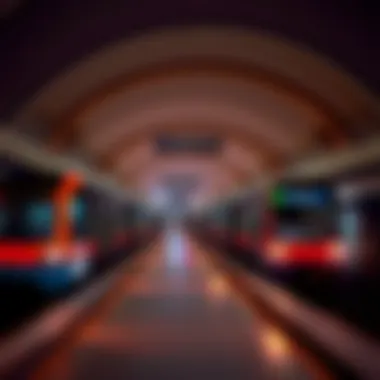
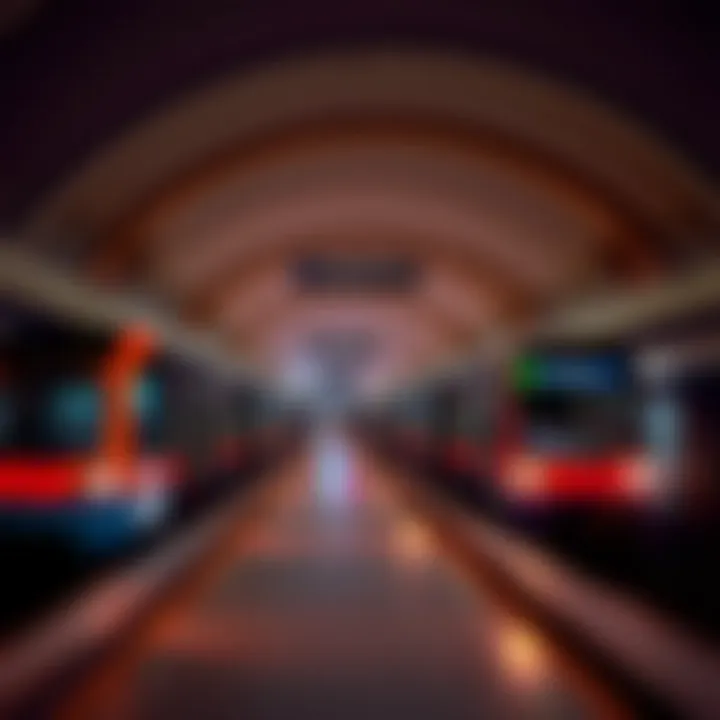
Encouraging Public Transit Use for Sightseeing
Promoting the use of public transit, particularly the Dubai Metro, for sightseeing offers several advantages. First off, it encourages a more sustainable approach to tourism, which is increasingly essential in urban settings. Here are a few benefits of advocating public transit in the context of weekend outings in Dubai:
- Cost-Effective Travel: Compared to hiring taxis or using ride-sharing apps, the metro provides an economical alternative for moving around the city. With affordable fares, tourists can allocate funds toward experiences rather than transportation.
- Ease of Navigation: The metro's system is user-friendly. With clear signage and maps available in multiple languages, tourists can navigate the metro with ease. This accessibility aligns perfectly with the diverse nature of Dubai's visitors.
- Time Efficiency: The metro operates on a punctual schedule, allowing passengers to avoid traffic delays common in a bustling metropolis. This time-saving aspect is crucial for tourists who want to fit as much as possible into their weekend itinerary.
- Reduction of Traffic Congestion: By encouraging tourists to use public transit, the city can help alleviate traffic issues, particularly during busy periods. This not only benefits tourists but improves the overall travel experience for locals as well.
- Enhanced Social Experience: Riding the metro allows visitors to interact with locals and other travelers, fostering a sense of community and enriching the cultural experience.
"A city that moves seamlessly, connects people from different backgrounds, and offers an attractive array of sights is one that keeps visitors coming back."
In summary, the Dubai Metro plays a vital role in promoting weekend tourism. Not only does it offer easy access to attractions, but it also supports a sustainable and enjoyable travel experience, encouraging both residents and visitors to embrace public transit for a richer exploration of the city.
Challenges Faced by Commuters
Navigating the Dubai Metro system on Saturdays can be a double-edged sword for many commuters. While the metro serves as a vital mode of transportation in Dubai's vibrant urban landscape, it comes with its own set of challenges. Understanding these challenges is crucial for anyone looking to maximize their travel efficiency and ensure a smoother experience.
Crowding and Capacity Issues
A widespread issue during weekends, especially on Saturdays, is overcrowding. Many Dubai residents and tourists flock to key attractions and shopping hubs, such as The Dubai Mall or Burj Khalifa. This influx often leads to train cars packed tighter than sardines in a can, particularly during peak hours. Commuters may find themselves in situations where they need to wait for the next train due to limited space. This can frustrate even the most patient travelers and significantly impact their plans.
To give travelers a better grasp of this bustling scenario, consider that the peak hours—typically around late morning and early afternoon—witnesses heightened numbers of boarding passengers. On the flip side, knowing the quieter intervals might allow individuals the luxury of a more relaxed ride. The unpredictability of crowd size can also vary seasonally, with holidays and special events attracting larger crowds than usual.
Strategies for managing these crowding issues include:
- Traveling during off-peak hours whenever possible
- Utilizing in-app services or online tools to track real-time crowd density
- Staying informed about any major events in the city that might affect crowd size
Service Disruptions and Maintenance
Service disruptions can add another layer of complexity to the commuting experience. Maintenance work on the metro lines, while necessary for ensuring safety and reliability, can lead to temporary service interruptions. These maintenance activities are typically scheduled during the weekends when ridership patterns are anticipated to be lower, yet they can still cause inconvenience for travelers who rely on the metro for their weekend plans.
For instance, if a line is under maintenance, commuters may need to make unplanned transfers or seek alternate routes, which can be time-consuming and perplexing, especially for those unfamiliar with the system. It's crucial for riders to keep abreast of any service advisories, which can usually be accessed via the official RTA (Roads and Transport Authority) websites or their social media channels.
To mitigate the impact of such service disruptions, effective communication is key. The more informed commuters are about scheduled maintenance or unexpected service changes, the better prepared they’ll be. This can mean checking service updates before heading out or downloading mobile applications that provide real-time updates on train schedules and disruptions.
Keeping an eye on the Dubai RTA website
can help commuters plan their journeys more effectively, ensuring they can navigate any unexpected interruptions with minimal stress.
In summary, while the Dubai Metro is an efficient and critical element of the city’s transportation fabric, commuters must remain vigilant about these challenges. Awareness of crowding and potential service disruptions is essential for anyone looking to travel smoothly through the bustling cityscape of Dubai. The ability to adapt and plan ahead is often the difference between a pleasant journey and a nagging headache.
Future Developments in Metro Services
As Dubai continues to bloom into a global metropolis, the need for a robust public transport system intensifies. Future developments in metro services are vital for ensuring that the infrastructure can handle the expanding population and tourism influx. This section will explore extensions, new lines, and any improvements that could enhance Saturday services, ensuring that commuters and tourists have both efficiency and convenience at their fingertips.
Extensions and New Lines
Dubai Metro is often seen as the backbone of the city’s public transportation. To accommodate the increasing number of travelers, plans for extensions are afoot. New lines are not merely about reaching further; they are about linking communities, boosting real estate values and improving accessibility.
- Expansion Areas: Areas such as Jumeirah and Deira are on the radar for extensions. These neighborhoods have bustling business districts and tourist spots that could benefit immensely from seamless metro access.
- Project Timeline: While specifics are always subject to change, stakeholders should keep tabs on announcements from authorities such as the Roads and Transport Authority (RTA) for upcoming timelines.
- Environmental Impact: More lines mean more trains, and thus, it's crucial to study how these expansions will fit within Dubai's sustainability efforts. Leveraging solar power or other sustainable energy sources could lessen the carbon footprint of the services.
Ultimately, extending the Dubai Metro network not only enhances user experience but also encourages a shift to public transport, reducing the number of cars on the roads. This can lead to quieter streets and cleaner air, making Dubai even more attractive to both residents and tourists.
Improvements to Saturday Services
The weekend is a prime time for leisure travel, and as such, enhancing Saturday services must be a continuous focus. Many tourists and residents explore attractions during the weekends, and timely metro services can significantly influence their experience.
- Increased Frequency: On Saturdays, where foot traffic and demand can surge, it might be beneficial to increase the frequency of trains. Shorter wait times can mean quicker access to popular spots, which is invaluable for those on tight schedules.
- Updated Scheduling: Regular reviews and adjustments based on commuter feedback will help ensure that the schedules align with public demand. This could mean later services as the city’s nightlife flourishes or earlier start times to accommodate morning tourists.
- Focus on User Experience: Upgrading facilities at stations - such as electronic billboards that show real-time updates on train arrivals - can greatly enhance commuter satisfaction. Providing easy-to-read maps coupled with multilingual information assists both locals and tourists, creating a welcoming environment.
"Public transport is more than just a means to travel; it's a lifeline connecting communities and boosting economies."
For investors and expatriates, these developments potentially bring about heightened property values adjacent to stations. With tourism peaking during weekends, timely service upgrades not only cater to locals but attract visitors, lingering longer in the city as they explore without the worry of transport logistics.
End
Understanding the nuances of Dubai Metro timing on Saturdays is crucial for both everyday commuters and tourists. The metro system is vital for navigating a city known for its rapid growth and extensive visitors. With the right information, riders can make informed decisions about their travel plans, optimizing their journey while minimizing their waiting times.
Summary of Findings
The operational hours of the Dubai Metro on Saturdays are tailored to accommodate both local commuters and the influx of tourists seeking to explore the city's attractions. Below are some key points derived from our analysis:
- The metro typically operates from 8 AM to midnight on Saturdays, unlike weekdays where it starts earlier.
- Peak hours can get quite busy, especially in the afternoon when shopping and leisure activities are at their peak.
- Enhanced service frequency during weekends helps manage the increased passenger flow, ensuring that trains are available for those needing them the most.
- Awareness of nearby bus and taxi services further enhances the overall travel experience, making the public transport network more cohesive.
These findings highlight the importance of planning ahead to avoid the busy rush and utilize the metro effectively.
Final Thoughts on Efficient Transit
Looking forward, it's clear that efficient transit is about more than just the service itself. It involves understanding the entire network of options available to passengers. Here are a few considerations:
- Stay Informed: Keep track of any changes in service that may occur due to maintenance or local events. Websites like RTA provide real-time updates on metro services.
- Flexibility in Travel Plans: Allow yourself some flexibility when planning trips. If possible, travel during off-peak hours to ensure a more comfortable experience.
- Leverage Technology: Utilize mobile apps for purchasing tickets and checking train schedules. Such tools can save time and help avoid confusion.
By approaching the metro system with this understanding, users can minimize frustrations and make their travels smoother. Thus, an informed rider is an empowered one in the buzzing urban landscape of Dubai.















